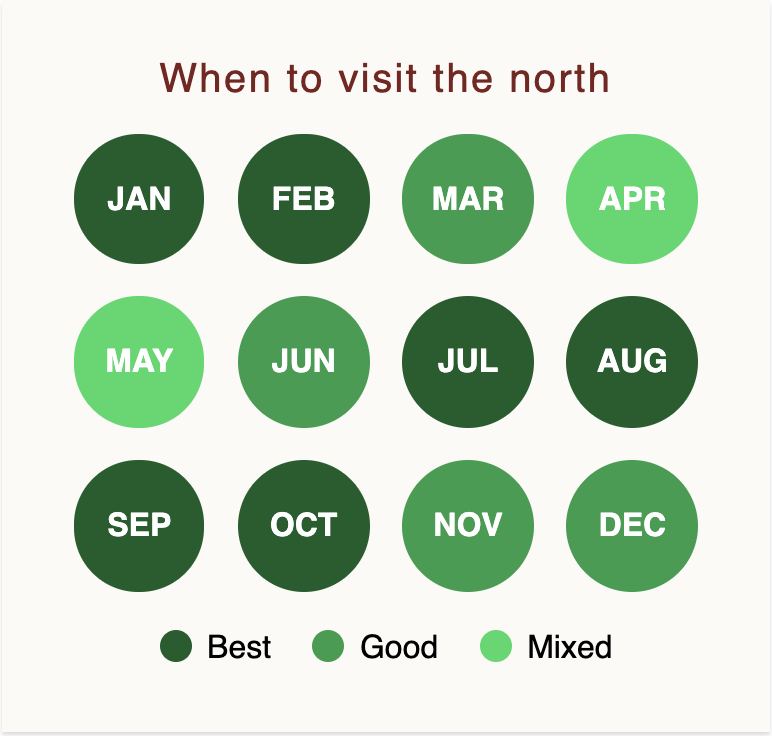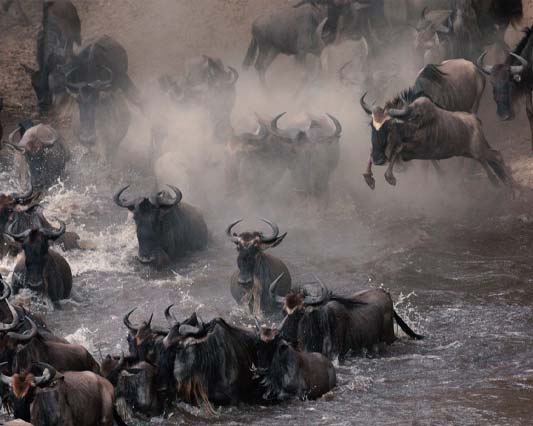Depending on whether you wish to enjoy a Northern or Southern circuit safari your trip would begin with a flight to Kilimanjaro respectively. The Northern circuit meanwhile holds just as much charm, with the Serengeti plains embodying archetypal African scenery and providing a stage for the Great Migration. There is also the fascinating Ngorongoro Crater to explore and the beautiful Lake Manyara, which is extremely popular with flamingos. Luxury camps and lodges provide the perfect bases from which to set off on game drives and walking safaris into the wilderness in search of fantastic big-game sightings.
Generally, Tanzania is best to visit in the dry-season months of July – October when the parks are dry and wildlife viewing is dramatic, easy, and action-packed.
However, there are pros and cons to every time of year so it is definitely worth calling to discuss. For example, June and October/November are marvelous shoulder season months, where you get amazing wildlife but for a third of the price than in the peak season with special offers and low season rates.
Ngorongoro is amazing year round – it is not very big, and so the animals can’t widely disperse when there is plentiful grass and water. February is the very best time to see the Great Migration as the wildebeest congregate in the southern plains’ during calving season.
The parks of Southern Tanzania are classically dry-season parks so definitely best from July – October. Outside these months, the wildlife can be trickier to find than in Northern Tanzania.
As Ruaha and The Selous are relatively low land compared to northern Tanzania, they are affected a bit more by the rains. The Selous is closed from mid-March to the end of May, as the camps are inaccessible when it has been very wet. Ruaha is also mostly closed at this time of year too.
Both October and November can be very hot in the Selous which is worth noting if you are not a fan of high temperatures.


From July – October the herds are crossing the Mara River in the northern Serengeti. This is where you get those dramatic Attenborough-esque scenes of wildebeest hurtling themselves into crocodile-infested waters.
February is when the calving season is in full swing and this is the best time to see the herds in their full glory as they gather in their thousands on the endless plains of the south. February is the only time of year you are guaranteed to see the herds if you stay where they are predicted to be, as they never fail to gather in the Ndutu plains at this time of year.
We would advise visiting the Serengeti at these times if the Migration is on your bucket list and you’re wanting a peak-season luxury safari in Tanzania. However, Migration is a complex and unpredictable event. It is important to know the pros and cons for each time of year, which you can find in our month-by-month migration blogs on our chart to the right.
